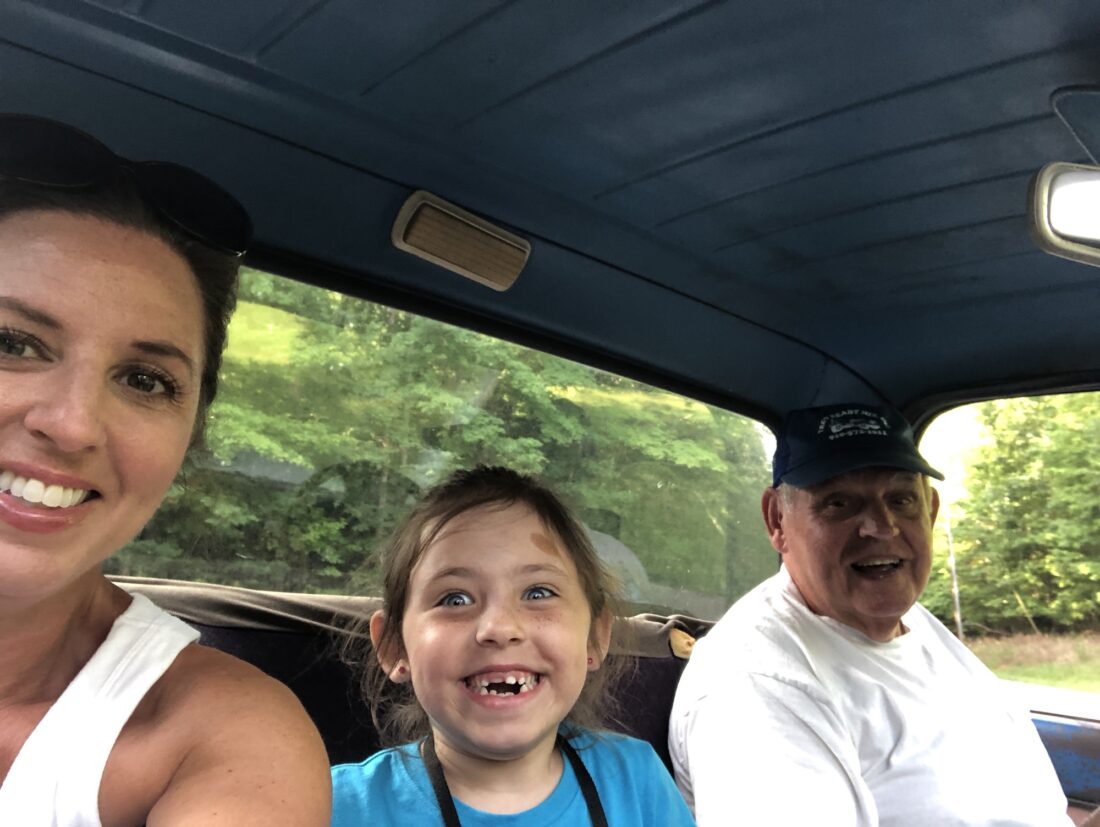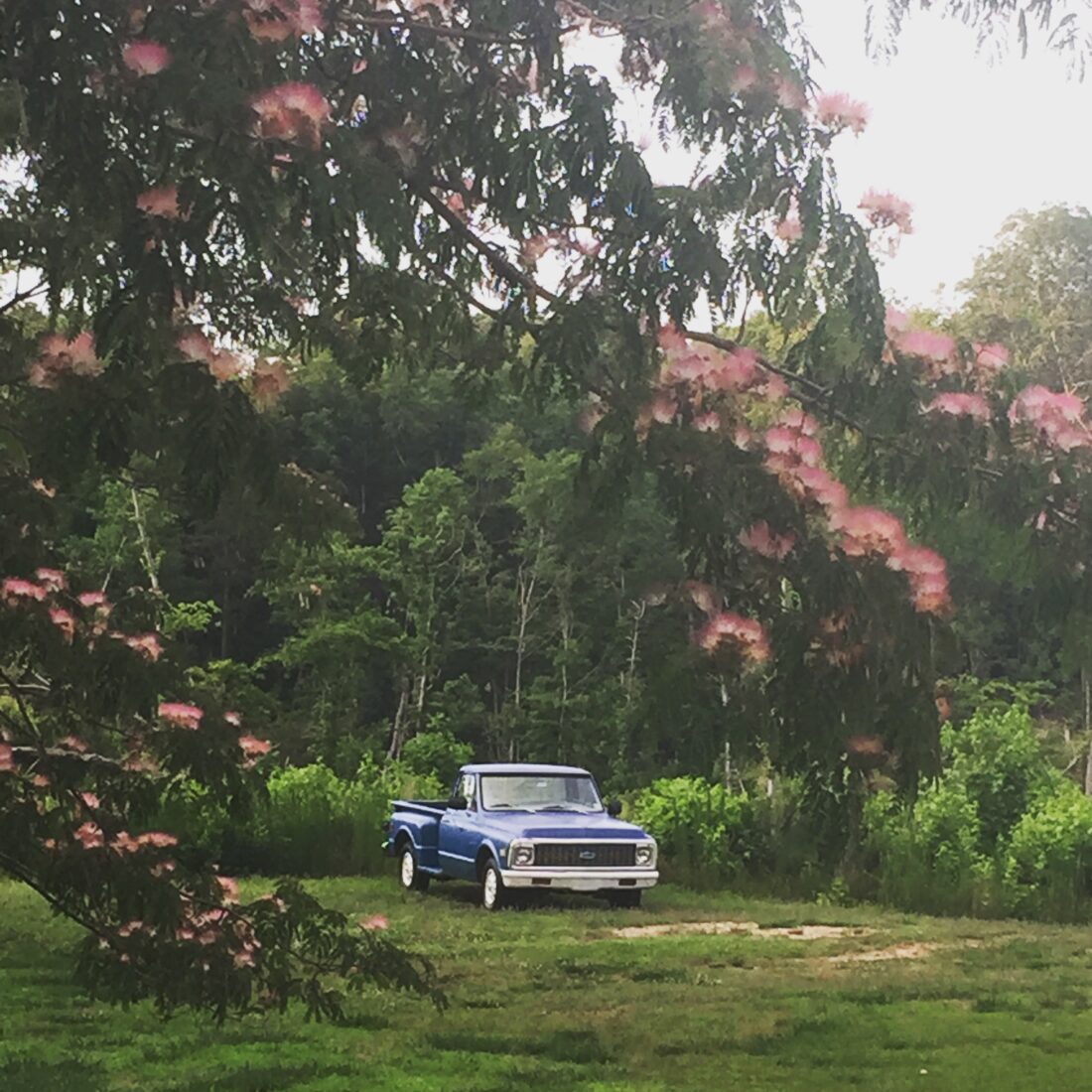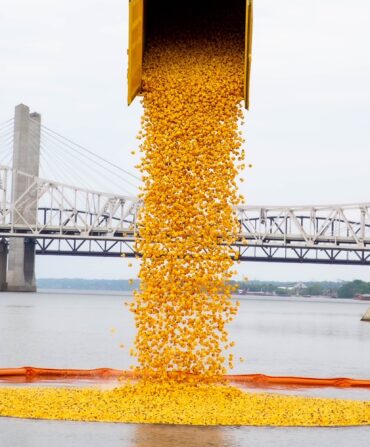I needed a 1971 Chevy pickup like I needed a hole in the head.
I had no intention of buying a truck last spring, much less one older than me. With a horizontal crack across the entire windshield, fading blue paint, and an ugly scar on its face from an incident that happened so long ago no one really remembers it, the truck isn’t much to look at. Cloth seat covers corral the foam bursting through the original vinyl, and fissures pucker the dashboard like dozens of mini volcanic eruptions thanks to too much sun exposure on summer days spent fishing at Little River, in Montgomery County, North Carolina. Short and squat, with heavy doors like a Sherman tank and rusting floorboards revealing the dirt below, the pickup bears the marks of a life well lived. While most of its kind have long since been sent to the junkyard, it remains, and there is something to be said for that—for surviving.

I have always regarded people who keep old cars in their yards with a mixture of disdain and bewilderment: Why? It looks tacky and brings to mind epithets like clunker and hooptie. But this truck has a history, I told myself, a name even—the Blue Goose. It’s different.

Our family’s history with the Blue Goose started in the late 1980s. My cousin W.R., a wheeler and dealer and shade tree mechanic, found it for my granddaddy for a good deal. Gang Gang, as he was called, wasn’t in the best of health and drove the truck very little before he passed away in June of 1990.
By default, the pickup passed to my daddy, who relegated it to work errands and fishing trips over the next three decades. But this is how it became mine: I was at work and received a text from my mama that there was a man in the yard wanting to buy the Blue Goose. The truck had been coughing and sputtering for years and suffered from a list of ailments like an old man—it even had to be towed home once. Daddy would get one part fixed, then something else would break. Still, there were days that he said it “ran like a champ.” One day Mama had enough, and Daddy needed a more reliable spare vehicle. So he gave in and put a “for sale” sign on the dashboard and parked the Goose at the edge of the driveway.
Mama had done what the rest of us didn’t have the heart to do, and I couldn’t say as I blamed her. She had never felt attached to the Blue Goose the way the rest of us had. I could probably count the times on one hand she had actually ridden in it (and she complained it smelled like gasoline and wood the whole time). It stung when I saw it for sale, like iodine on a cut that Mama swears isn’t supposed to hurt, but does a little all the same. Still, we live in the middle of nowhere, so I honestly didn’t expect anyone to see it, much less want to buy it.

I called Mama after receiving her text and heard my daughter wailing in the background. Daddy said he’d talked to her about selling the Blue Goose and had thought she was okay with it. She was not. “What do you want to do?” Mama asked. “I’ll buy it,” I said, more as a reflex than as a conscious decision. At that moment, I finally got it—the reason people hold on to vehicles; the thought of saying goodbye to the Blue Goose forever made me misty-eyed, too.
My first memories of the Blue Goose are of my daddy driving while I rode in the bed down our dirt road to my grandparents’ house, with Spot, our beagle mix, in the lead—unimaginable to my daughter and entire generations raised with car seats and seat belt laws. In the winter, we would take it to go cut firewood, and my job was to look for lighter stumps, the rich pine ones that make the best kindling. One time, I found the largest stump that either my father or I had ever seen, at least twelve feet tall, with probably that much more belowground. There are most likely still pieces of that stump strewn around their yard.
But the Blue Goose wasn’t just a work truck; sometimes Daddy used it for his favorite pastime—fishing. It went places every day that pretty trucks don’t go, where tree branches scrape the side panels and potholes in the log roads bounce you off your seat. It was on one of those trips to the upper dam, deserted and no longer operational, that we had a flat tire. Cell phones weren’t ubiquitous then, so we weren’t sure how we were going to get home. After searching around the dam, we found a metal beam, and Daddy was able to drive the truck up on it enough to change the tire, the closest to a MacGyver moment either of us has ever had.
Pets usually rode in the Blue Goose to the vet, because no one cared about getting animal hair on the interior. Peanut, the Feist mix we had for many years, enjoyed her weekly trips to the dump, letting her ears blow in the breeze when the windows were down. Daddy called it Peanut’s truck back then. It was also where our shy basset hound, Daisy, finally accepted my future husband into the family when he rode in the back with her to get her rabies shot.
But the Blue Goose has taken on a deeper family connection since my daughter was born ten years ago. From the time she could barely walk, she learned to recognize the sound of the Blue Goose, a loud, unmuffled rumble that can be heard the next road over, and she would go to the window to wave as Daddy passed by on the way to the dump each Saturday morning. As she grew, she loved to just sit in the Blue Goose, as we pretended to go on wild animal safaris without going anywhere at all. We loved it so much that we’ve used it in family pictures, sitting on my grandma’s handmade quilt, tailgate held up by the original rusty chain.

It’s not just a truck that I bought, I’ve realized, but a link to my past, to family that has gone on, and to memories that somehow become tangible when I run my hand over the cracked steering wheel or pick up the jack that Daddy always kept on the floorboard after we got stranded at the dam.
So now the Blue Goose is once again parked under the mimosa tree in my parents’ backyard. My husband and I talk about the possibility of fixing it up a bit, nothing too crazy. I’m not planning on entering it in any car show, but it’s not going to be propped up on cinder blocks either. The only thing that has changed is that the name on the title is now mine—as it was always destined to be, I suppose, from that first ride in the back down our dirt road.








